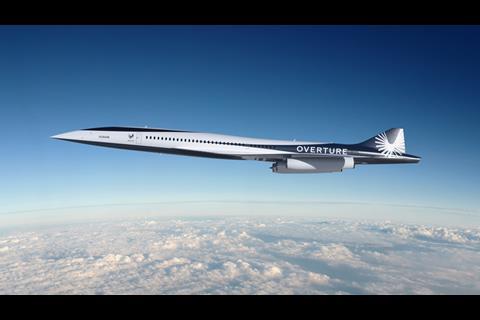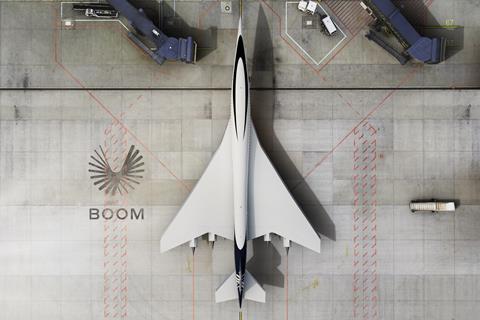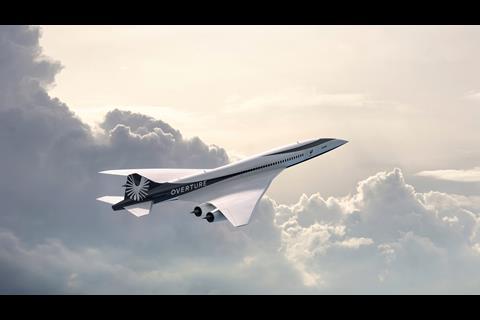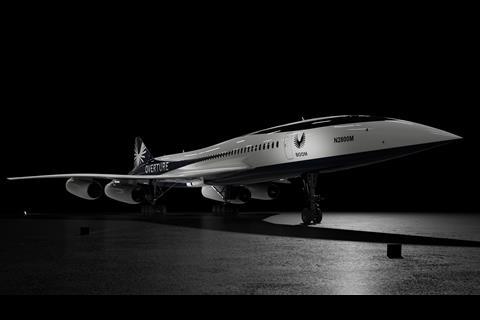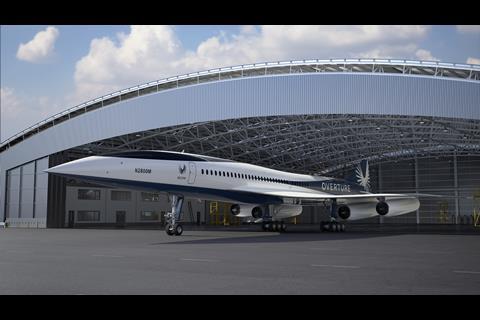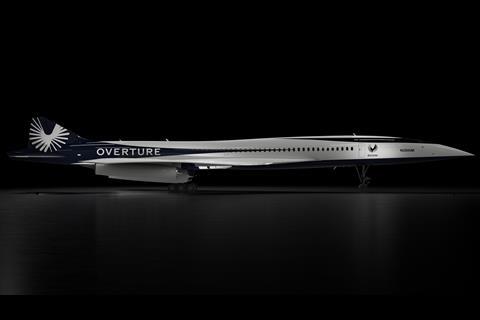Supersonic aircraft developer Boom has introduced a new design for its Overture flagship aircraft, which it hopes to fly for the first time in early 2026.
“It’s kind of like if Concorde and 747 had a baby,” said chief executive Blake Scholl at the Farnborough International Airshow on 19 July.
The new aircraft design now features four engines, instead of the two originally envisaged. It also includes a higher-aspect ratio gull wing, larger wingspan and a contoured fuselage – wider in the front and slimmer towards the back. All of the changes are designed to improve aerodynamic efficiency.
Scholl says the company has gone through 50 design cycles, including wind-tunnel tests, since the company presented the first draft of Overture five years ago.
“We have learned so much over the last few years that we saw a real opportunity to improve the configuration,” Scholl says. “Overture delivers not just on speed and noise, but also safety and sustainability.”
The aircraft is slated to travel at Mach 1.7 over water, and 0.94M over populated areas, never creating a sonic boom. It will have a range of 4,250nm (8,056km) and will seat 64-80 passengers. From nose to tail the aircraft measures 61.3m (201ft) and 32.3m (106ft) wingtip-to-wingtip.
First deliveries are planned for 2029, he says.
Boom aims to allow more people to go more places, more often, Scholl adds. The aircraft will be capable of running on 100% sustainable aviation fuels, with no blends or additives, and operations will be net-zero emissions.
“We want to completely remove sustainability as a reason not to travel,” he says, adding that the aircraft has the potential to be used for “hundreds” routes worldwide. A trip from North America to Europe could be completed in as little as 3h30 minutes, or across the Pacific in 4h30min.
Boom has also added Collins Aerospace, Eaton and Safran to its top-tier suppliers for Overture. Collins will provide major aircraft systems and components, Eaton will develop fuel distribution, measurement and inerting systems and Safran will build the landing gear for the supersonic aircraft.





















